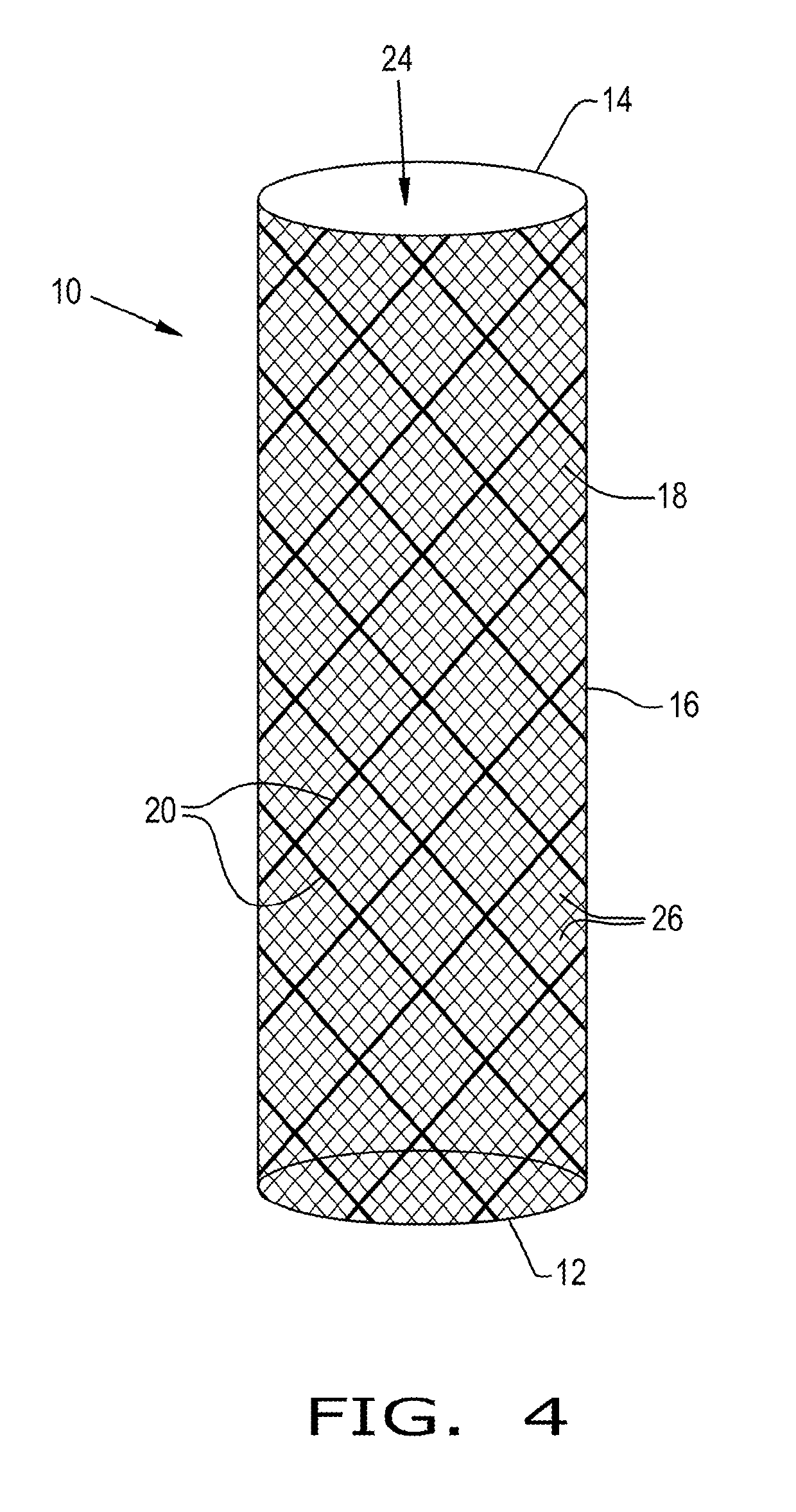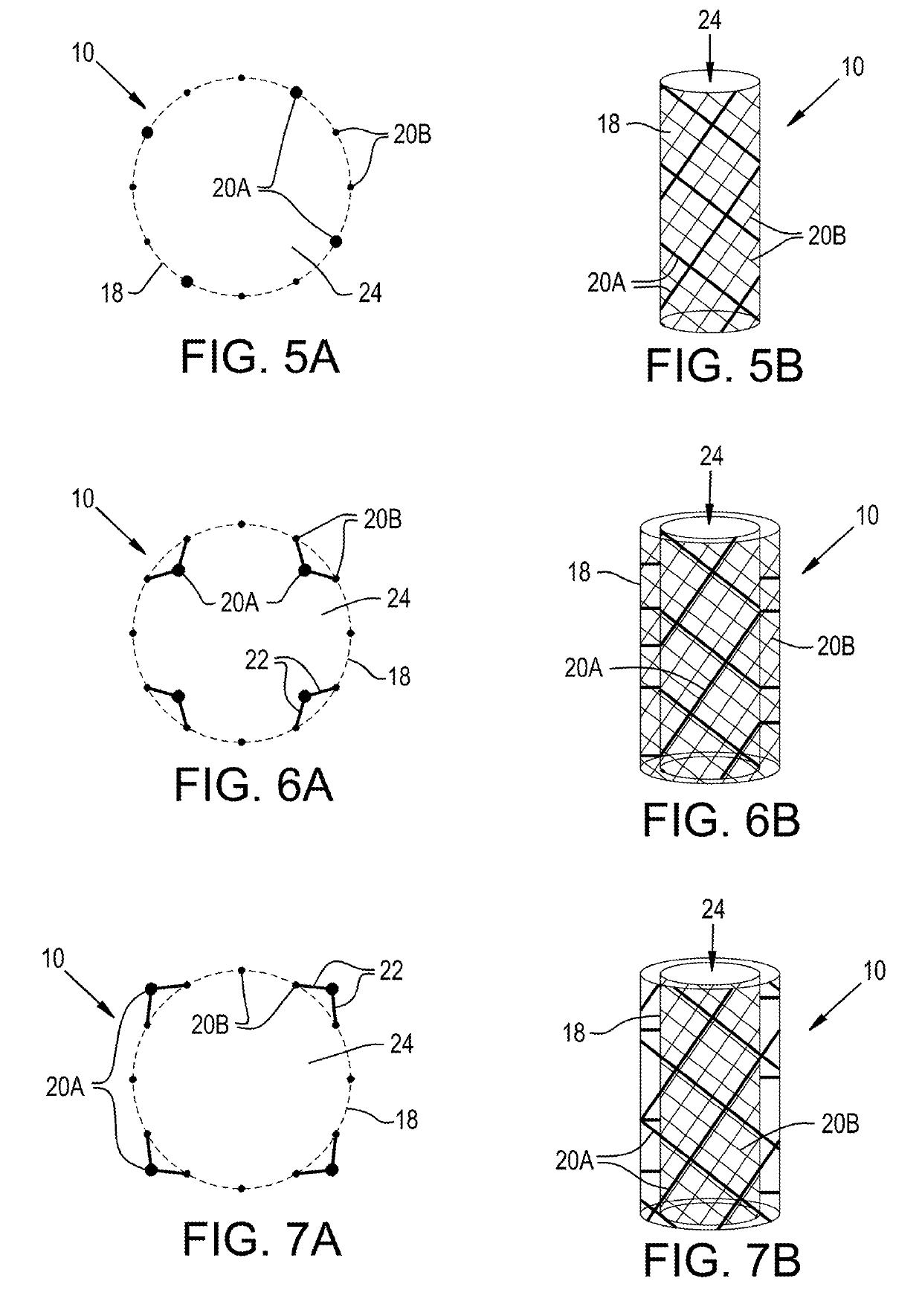Thromboembolic protective flow-diverting, common carotid to external carotid intravascular stent
a stent and thromboembolic technology, applied in the field of high radial force stents, can solve the problems of ischemic stroke, artery obstruction, brain tissue dysfunction in that area, etc., and achieve the effect of reducing the risk of embolic cerebrovascular events, and high radial forces
- Summary
- Abstract
- Description
- Claims
- Application Information
AI Technical Summary
Benefits of technology
Problems solved by technology
Method used
Image
Examples
Embodiment Construction
[0018]FIGS. 3 through 7B represent embodiments of a self-expanding intravascular stent adapted for use as a thromboembolic flow-diverting device that can be placed in the common and external carotid arteries to divert emboli to the external carotid artery without obstructing blood flow into the internal carotid artery. The stent incorporates struts (tines) arranged to form a scaffolding that increases the radial forces generated by the stent when expanded within the common and external carotid arteries, wherein the radial forces generated by the stent are intentionally sufficient so that the high radial forces against the vessel walls of the common and external carotid arteries allow for adequate endothelial apposition, promoting neoendothelialization over the stent and thus leading to long-term stent patency and limiting the need for long term dual antiplatelet agents. The intravascular stent discussed below may be referred to as a high radial force stent to distinguish it from con...
PUM
 Login to View More
Login to View More Abstract
Description
Claims
Application Information
 Login to View More
Login to View More - R&D
- Intellectual Property
- Life Sciences
- Materials
- Tech Scout
- Unparalleled Data Quality
- Higher Quality Content
- 60% Fewer Hallucinations
Browse by: Latest US Patents, China's latest patents, Technical Efficacy Thesaurus, Application Domain, Technology Topic, Popular Technical Reports.
© 2025 PatSnap. All rights reserved.Legal|Privacy policy|Modern Slavery Act Transparency Statement|Sitemap|About US| Contact US: help@patsnap.com



